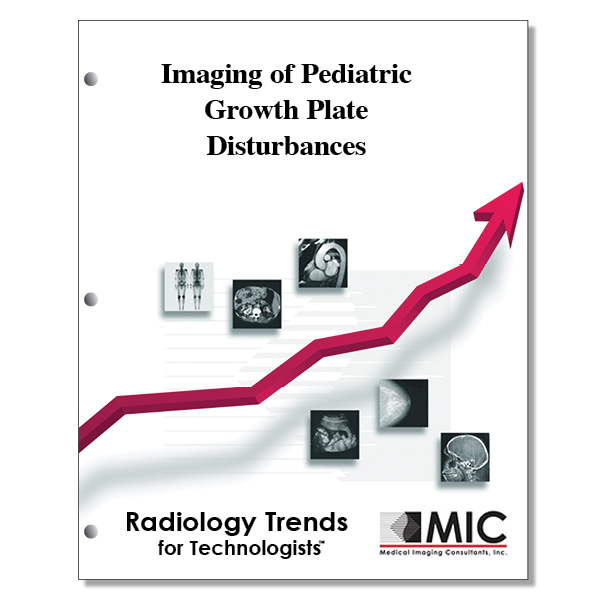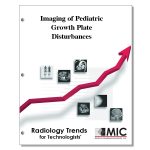

Imaging of Pediatric Growth Plate Disturbances
The roles of imaging and the rationale for treatment are presented for pediatric growth plate disturbances.
Course ID: Q00571 Category: Radiology Trends for Technologists Modalities: MRI, Radiography3.0 |
Satisfaction Guarantee |
$34.00
- Targeted CE
- Outline
- Objectives
Targeted CE per ARRT’s Discipline, Category, and Subcategory classification:
[Note: Discipline-specific Targeted CE credits may be less than the total Category A credits approved for this course.]
Computed Tomography: 1.00
Procedures: 1.00
Head, Spine, and Musculoskeletal: 1.00
Magnetic Resonance Imaging: 1.75
Image Production: 0.25
Data Acquisition, Processing, and Storage: 0.25
Procedures: 1.50
Musculoskeletal: 1.50
Radiography: 1.00
Procedures: 1.00
Extremity Procedures: 1.00
Registered Radiologist Assistant: 2.75
Procedures: 2.75
Musculoskeletal and Endocrine Sections: 2.75
Sonography: 1.25
Procedures: 1.25
Second/Third Trimester and High Risk Obstetrics: 0.25
Superficial Structures and Other Sonographic Procedures: 1.00
Outline
- Introduction
- Primary Growth Plate Complex
- Growth Plate
- Reserve Zone
- Proliferative Zone
- Hypertrophic Zone
- Perichondrium
- Epiphysis
- Metaphysis
- Growth Plate
- Imaging of Hyaline Cartilage
- Direct Growth Plate Disturbances
- Growth Plate Fractures
- Soft-Tissue Physeal Interposition
- Slipped Capital Femoral Epiphysis
- Indirect Growth Plate Disturbance Involving the Epiphysis
- Legg-CalvÈ
- Hyperabduction OsteonecrosisSoft-Tissue Physeal Interposition
- Posttraumatic OsteonecrosisSlipped Capital Femoral Epiphysis
- Tibia VeraGrowth Plate Fractures
- OsteomyelitisSoft-Tissue Physeal Interposition
- Indirect Growth Plate Disturbance Involving the Metaphysis
- Metaphyseal Fracture
- Treatment-related Osteonecrosis
- Overuse Injury
- Insensitivity to Pain
- Imaging and Treatment of Growth Disturbance
- Conclusion
Objectives
Upon completion of this course, students will:
- differentiate between intramembranous growth and endochondral growth
- state the only growth center in smaller bones
- list possible outcomes of an impaired primary growth plate
- recall the most common insult mechanism
- state when mesenchymal cells differentiate into chondrocytes
- state when mesenchymal cells differentiate into osteoblasts and osteoclasts
- recall how bone remodeling and formation of the medullary cavity occurs
- describe primary growth plate shape at birth
- list the distinct chondrocyte zones
- state the zone with the highest oxygen tension
- list the sub-zones of the hypertrophic zone
- describe the composition of the perichondrium
- recall what aspect of the perichondrium is responsible for the latitudinal growth of the growth plate
- state the age range in which the transphyseal channels disappear
- list the functions of the metaphysis
- differentiate between internal and external bone remodeling
- understand the marrow conversion processes in long bones
- state when growth recovery lines become present radiographically
- identify the preferred imaging modality for evaluating the hyaline cartilage
- describe the composition of hyaline cartilage
- list hyaline cartilage types that can be distinguished from each other at MR imaging
- list the phases of epiphyseal cartilage enhancement observed at MR
- list obstacles to using MR imaging more routinely for children
- state the percentage of growth plate fractures in children
- relate how growth plate fractures affect children
- state the number of Salter-Harris fracture types
- associate the percentage of growth plate fractures to each Salter-Harris fracture type
- state the rarest Salter-Harris fracture type
- state the preferred initial imaging modality for acute fractures, subacute healing response, and growth disturbances
- explain the intervention required if interposition of soft tissue into the growth plate following a fracture occurs
- record the percentage of slipped capital femoral epiphyseal cases that can be bilateral in nature
- state the best types of MR images to visualize different aspects of slipped capital femoral epiphysis
- describe Legg-Calvé-Perthes disease
- state the percentage of cases of premature growth plate closure in hyperabduction osteonecrosis
- describe fishtail deformity
- describe blount disease
- recall how osteomyelitis affects children in developed countries
- list the main functions of the metaphyseal vessels
- recall the percentage of acute lymphoblastic leukemia affected by bone infarction
- explain the end result of permanent growth plate injuries
